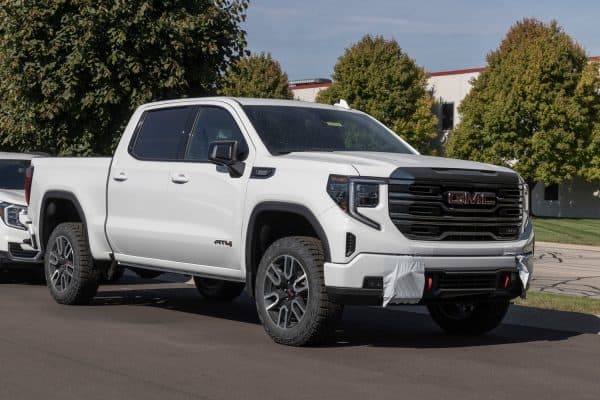A transmission cooler helps keep your truck's transmission fluid within its normal operating temperature range, especially while you haul or tow heavy loads. So how do you know if your truck has a transmission cooler? We've done the research for your convenience.
There are two basic types of transmission coolers: radiator-integrated coolers and independent external coolers. Radiators with integrated coolers have two extra tube fittings for the transmission fluid. External coolers, on the other hand, look like small radiators usually mounted in front of the air conditioning condenser.
Would you like to know more about how transmission coolers work? Do read on because we've prepared some tips for you to understand how they work and whether you need to install one or not.
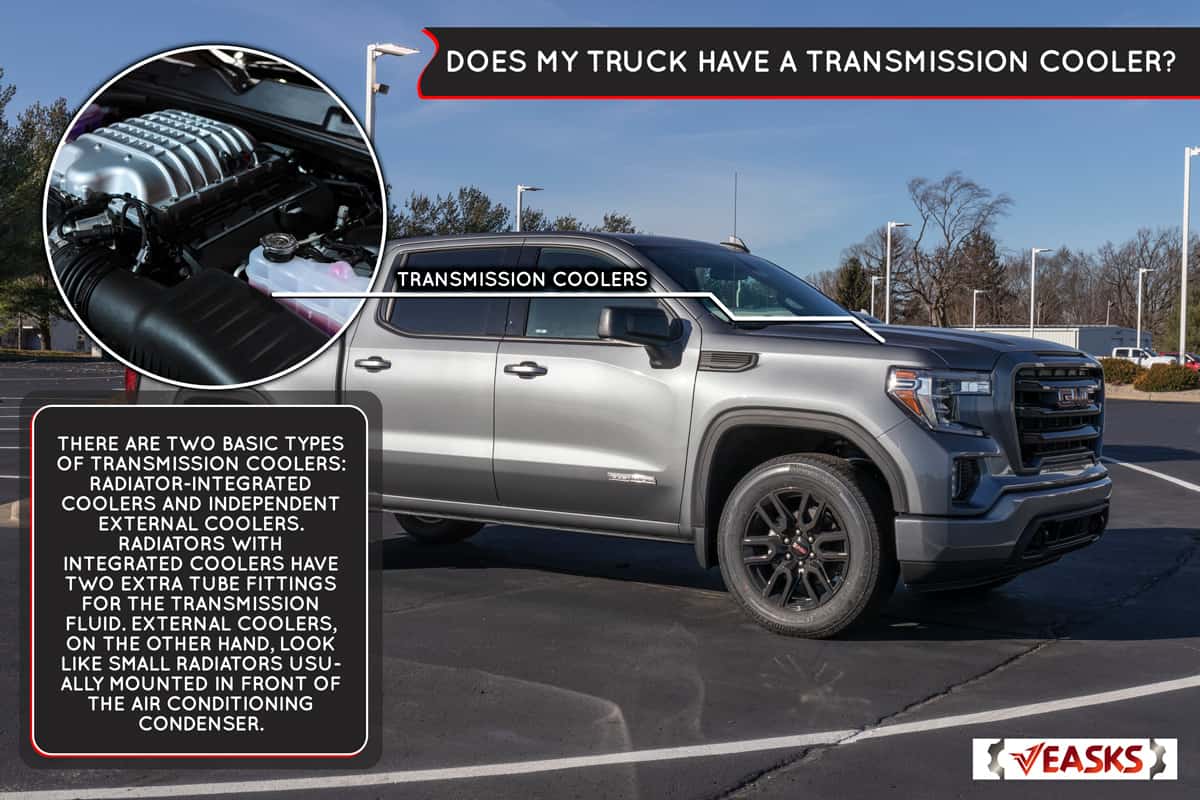
How Do You Know If You Have A Transmission Cooler?
The pickup truck segment is home to the automotive industry's designated workhorses. Although some models boast features and benefits that elevate them to a "luxury truck" category, they still carry the DNA of their class. They're tough beasts that can haul and tow heavy loads better than most cars can.
A powerful engine, as well as a reliable transmission system, are some of the basic requirements for trucks to carry out their formidable tasks. However, in the course of their operation, both of these mechanical systems accumulate heat. To prevent overheating, engines have cooling systems.
But what about the transmission?
Most large vehicles require transmission cooling if they have automatic transmission (A/T) systems. Why is this so? A/T systems normally run hotter than manual transmission (M/T) systems. However, we do not discount the fact that some M/T performance vehicles also need transmission cooling.
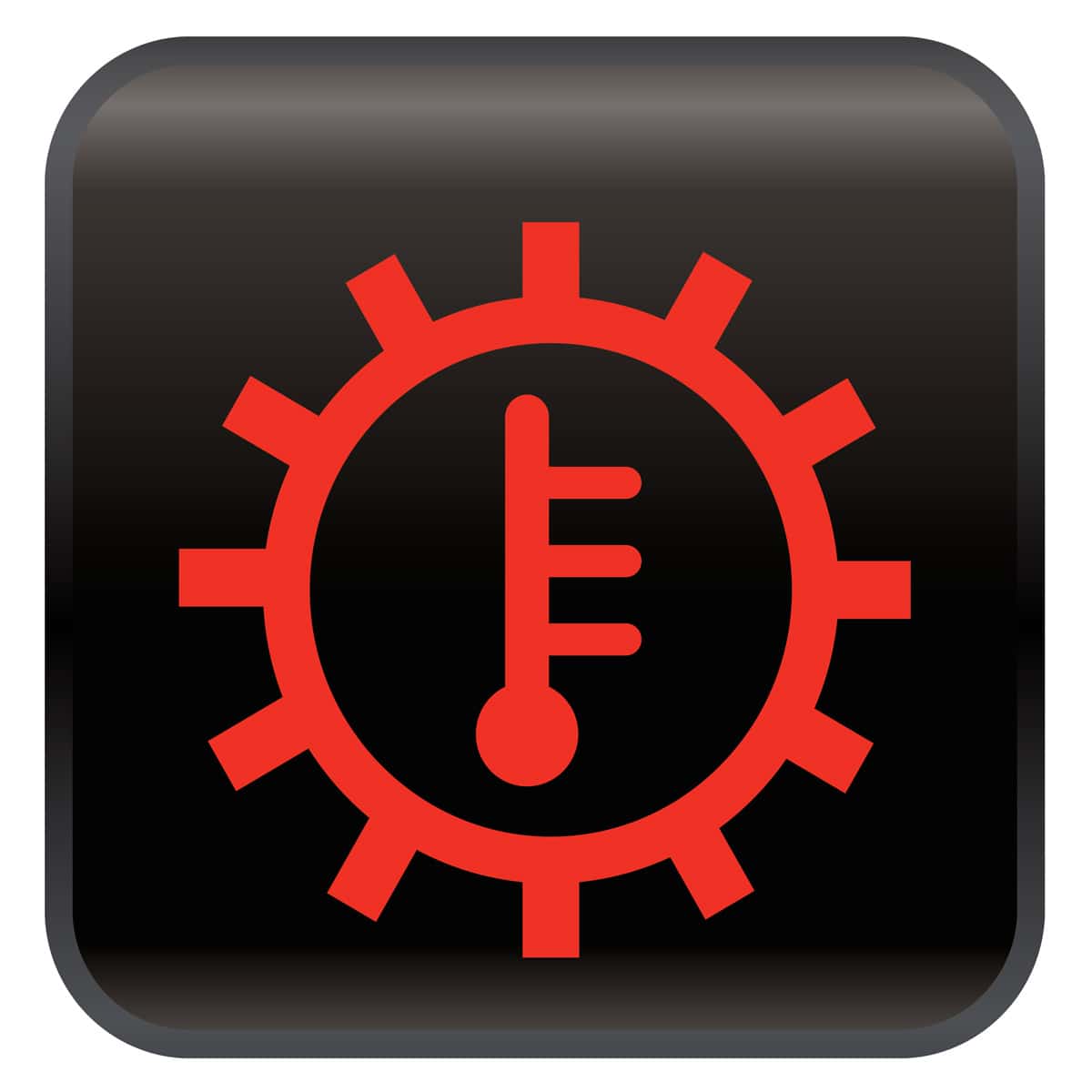
Transmission coolers are not standard features in all vehicles, particularly in many smaller cars and 2WD crossovers. However, for many bigger trucks, SUVs, and some trail-ready crossover trims, a radiator-integrated transmission cooler is often a minimum requirement.
You'll know that your truck has an integrated transmission cooler by checking if your radiator has two ports or tube fittings with hoses that run to and from the transmission system. Check out this video below to help you know what to look for.
Radiator-integrated transmission coolers will suffice for normal truck operation. However, for heavy-duty hauling and towing, the transmission needs an independent external cooler. Although many towing or trailering packages include this cooler, you can also buy aftermarket models if needed.
Check out this best-selling external transmission cooler kit on Amazon.
External transmission coolers look like miniature radiators, usually mounted in front of the A/C condenser for the best heat dissipation.
How Does A Transmission Cooler Work Inside A Radiator?
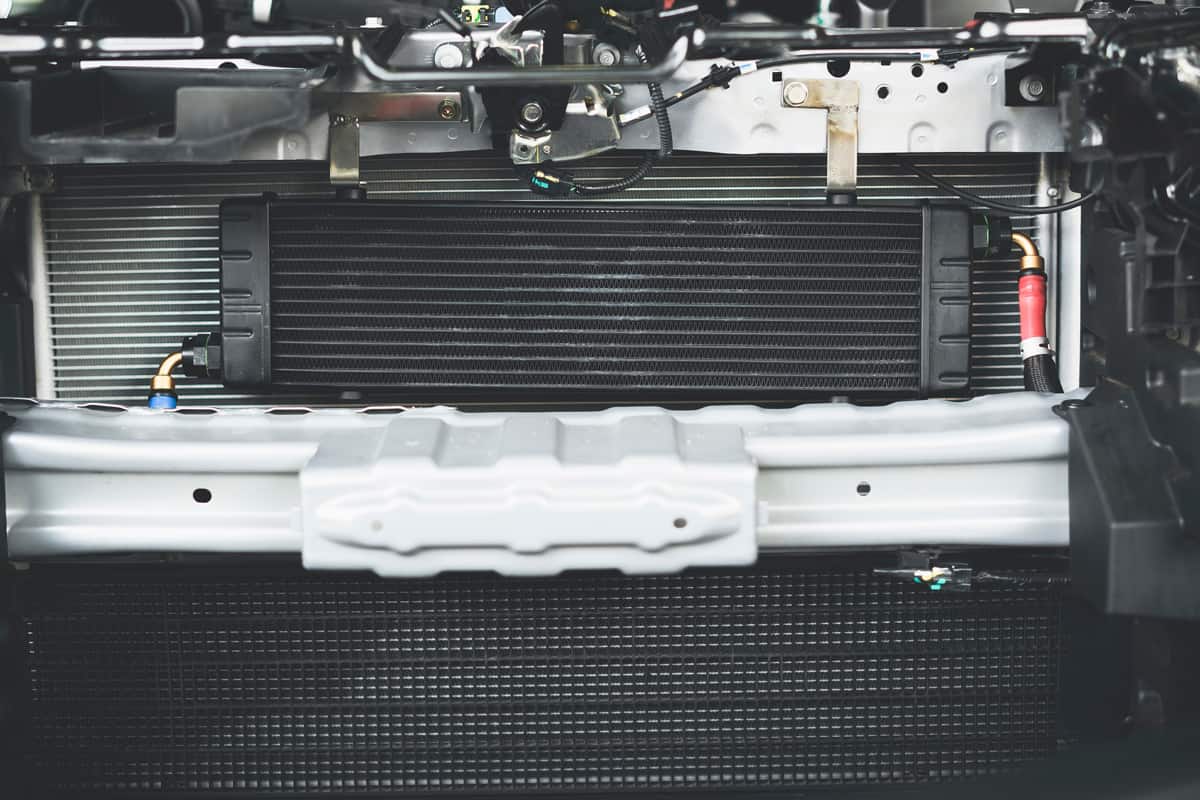
Integrated transmission coolers piggyback on your engine coolant's heat absorption and dissipation function. The integrated cooler is a metal tube residing in a compartment at the bottom or side of the radiator. The transmission fluid flows through the tube via the two fittings outside the radiator body.
The sealed metal tube is completely surrounded by the engine coolant that also flows through the radiator. As the engine coolant passes outside the metal tube, it absorbs the transmission fluid's heat. This liquid-to-liquid heat exchange cools down the transmission fluid on its way back to the transmission assembly.
Check out this video to see what an integrated transmission cooler looks like inside a radiator.
How Does An External Transmission Cooler Work?
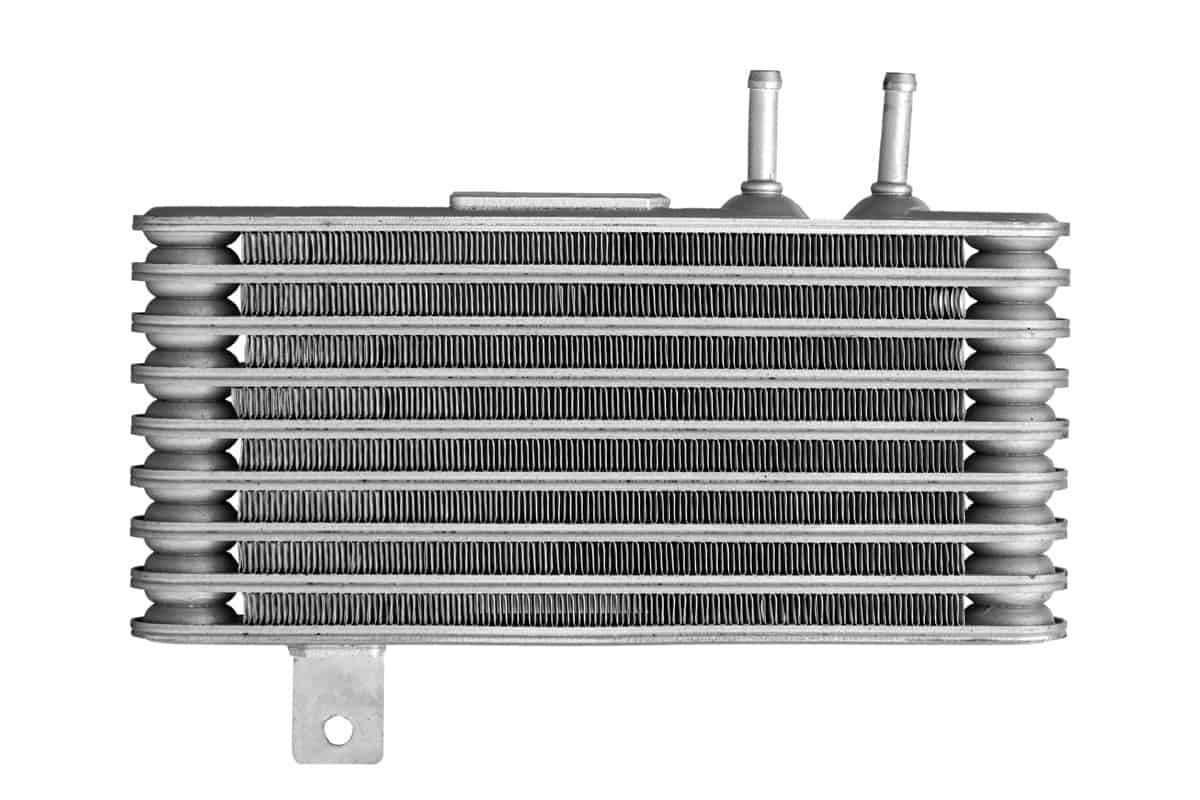
An external transmission cooler works exactly like your truck's radiator does: it cools down the liquid inside it using the air flowing outside it. However, instead of dissipating heat from the engine coolant, this smaller radiator exclusively cools down the transmission fluid.
External transmission coolers rise to the occasion when radiator integrated coolers cannot do the job sufficiently anymore. As mentioned earlier, this need arises when you use your vehicle for strenuous tasks.
In most cases, you can get the best cooling results by letting your hot transmission fluid flow through both an integrated cooler and an external cooler.
However, you can also choose to bypass your integrated cooler and let an appropriately-sized external cooler do the job alone. This option takes some of the burden off your main radiator so that it can focus on cooling the engine better.
Check out this video explaining how you can use your integrated cooler and external cooler jointly or separately.
Does My Truck Need A Transmission Cooler?
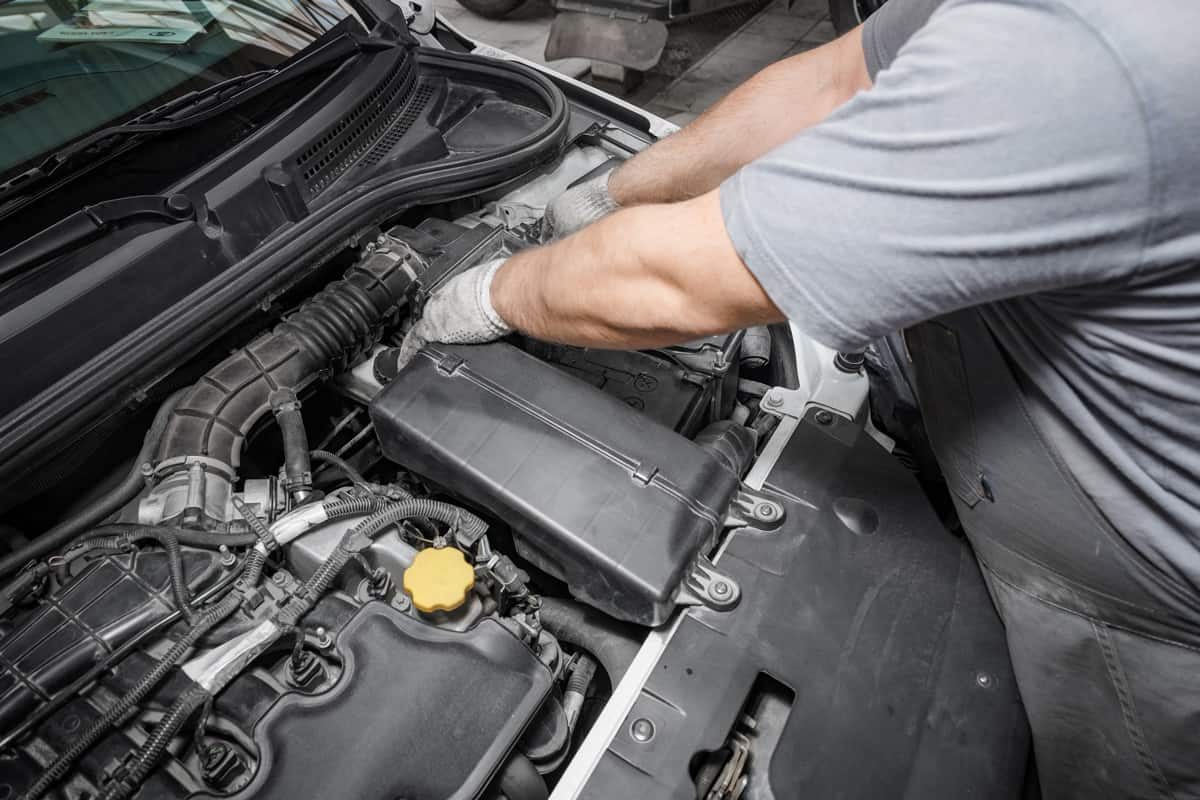
Did you know that your transmission can run as hot as your engine does? Normal engine operating temperatures range from 195 to 220 degrees Fahrenheit. On the other hand, A/T systems normally operate between 175 to 225 degrees Fahrenheit.
Even though no internal combustion is happening inside the transmission system, the transmission fluid can heat up to scalding temperatures. The friction from the clutch packs and gears is enough to generate this heat under normal driving conditions.
Heavy-duty hauling, towing, and off-roading, however, can raise the temperature even further. Without proper cooling, you will cut your transmission fluid's life significantly, and you may even damage your transmission system severely.
If you intend to maximize your truck's performance potential, then you definitely need to install an external transmission cooler.
How Do You Keep A Transmission From Overheating When Towing?
Towing is possibly one of the most strenuous tasks for your truck's transmission. If you tow regularly or heavily, then you need to go the extra mile to keep your transmission cool.
- Always follow your vehicle's maximum tow rating/capacity. Better yet, tow below the maximum rating.
- Check your tires for proper inflation and alignment.
- Be vigilant in checking and replacing your transmission fluid. Towing activities decrease your fluid's lifespan significantly.
- Have a service professional check your transmission system regularly.
- Maintain your radiator and engine cooling system well. Use the recommended engine coolant for your vehicle.
- Make sure that all your external cooling fans work properly.
- Install an external transmission fluid cooler.
- Replace your stock transmission fluid pan with a deeper one. Higher transmission fluid capacity means better transmission cooling.
- Observe proper towing habits and techniques while on the road.
How Do I Know If My Transmission Is Overheating?

Your transmission can overheat due to several factors working jointly or independently. Among these factors are:
- Improper transmission maintenance
- Hot weather
- Towing or hauling heavy loads
- Start-and-stop traffic
- Extreme off-roading
- Bad driving habits
Although there are several causes, as we mentioned above, we can summarize their effects into two main categories.
- The transmission system is generating too much heat
- The transmission's cooling circuit cannot disperse the heat sufficiently
Some vehicles have dedicated warning lights on the instrument console to tell you when your transmission is overheating. However, even without this telltale light, you may be able to notice some symptoms that your transmission's temperature is already higher than normal.
First, you may notice that your truck doesn't accelerate as much as it normally does. You may be revving the engine higher than usual, but your vehicle just won't pick up speed correspondingly.
Second, you may experience slipping or delayed response when your vehicle shifts gears.
Third, you may smell the acrid odor of burnt transmission fluid, especially while the engine is running. Transmission fluid may be escaping as fumes or drops because the heat and pressure inside the transmission system may have become too much for the seals.
Finally, if you have an integrated transmission cooler, you will also notice that your engine is overheating. This will happen because your engine coolant and radiator are getting overwhelmed by the combined heat produced by the engine and the transmission.
How To Cool Down Transmission Fast
Despite any prudent actions you may have taken to keep your transmission system cool, it can still overheat due to unforeseen reasons. So, if this situation does happen while you're driving, what do you do to cool your transmission down?
Your best option is to pull over slowly and safely to the side of the road as soon as you notice any symptoms of transmission overheating. Driving with an overheated transmission will only raise the fluid temperature higher and lead to worse damage or even an accident.
Open the hood and let the engine and transmission cool down. If you catch the symptom early, you can still try to drive the vehicle carefully after it cools down. If not, then you should call for a towing service.
Wrapping Up
Most A/T trucks have stock transmission coolers inside the radiator, and you will recognize them through the extra ports or pipe fittings that lead to and from the transmission. External transmission coolers, on the other hand, are much easier to spot as they look like smaller radiators mounted in front of the A/C condenser.
Thank you very much for reading. We hope we were able to help you understand more about transmission coolers and their benefits for your truck.
For more interesting reads about towing and other automotive topics, you may also check out these great articles below.
What Trucks Can Tow 15,000 lbs?



![Portrait of middle aged bearded truck driver standing by the truck and showing his commercial driver license. Focus on CDL license. Truck driving school and job openings, Do You Need A CDL To Drive A Box Truck [By State]](https://veasks.com/wp-content/uploads/2022/11/PORTRA1-600x400.jpg)
